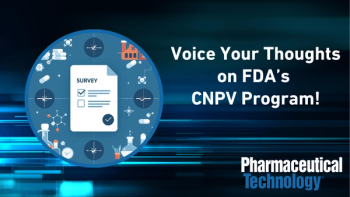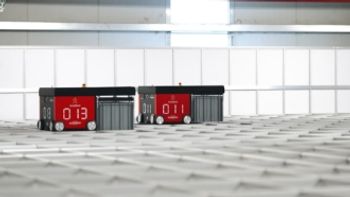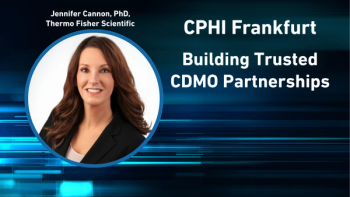
- Pharmaceutical Technology-07-02-2007
- Volume 31
- Issue 7
A New Manufacturing Framework
As a well-known and well-respected researcher, director, and speaker Fernando Muzzio shares his insights into the significant steps that have led to the "unprecedented" manufacturing industry of today.
Fernando Muzzio, PhD, started in the pharmaceutical industry in 1991 as a professor at Rutgers University (Piscataway, NJ). His research focused on the engineering and mechanics of blending and mixing systems and the behavior of particles in these operations. After serving as the director of the university's pharmaceutical engineering program, Muzzio now is the director for the new NSF ERC on Structured Organic Particulate Systems and a professor of the Department of Chemical and Biochemical Engineering at Rutgers University. He is also a member of Pharmaceutical Technology's Editorial Advisory Board. Muzzio has conducted numerous presentations on blend uniformity and model-based design. For Pharmaceutical Technology's 30th anniversary, he discussed with us the significant regulatory framework that has shaped the industry, especially process analytical technology (PAT) and quality by design, and how it will change the training and skill set of manufacturing operators.
What significant changes have you seen during your tenure in the industry?
The Food and Drug Administration has moved quite significantly from what was essentially a reactive frame of mind that was making change very difficult to a much more proactive approach to enhance the understanding of products and processes and significantly facilitate and promote continuous process improvement. That has motivated the industry to become much more involved in continuous improvement approaches, design methodologies, and predictive science. Those are major changes.
Besides FDA's CGMPs for the 21st Century document, which regulatory guidances had a major influence on manufacturing?
The 2003 guidance on blend uniformity [Guidance for Industry: Powder Blends and Finished Dosage Units—Stratified In Process Dosage Unit Sampling and Assessment] was an important step forward because it was a result of a very successful dialogue between the industry and the agency with some participation of academia. It was an example of how rather than repeating what we had been doing for years and years, we began to focus on developing new thinking to come up with a science-based approach to determine the best thing. That was an important big step that preceded the process analytical technology initiative.
Have the problems that manufacturers are now facing changed from what they were before this proactive approach?
In many cases, manufacturers are still having the same types of problems they had before, whatever those might be. There are a lot of legacy products that were developed many years before this new framework was put in place, and those products are still manufactured by and large according to those methods and are required to meet the same compliance requirements that were in place before PAT and quality by design. PAT and quality by design are being adopted gradually; it will take a number of years before most of the products in the industry's portfolio are really developed by the PAT approach. And even then, quality problems will appear. But what will change is the methodology of solving these problems and the amount of predictive knowledge that we will accumulate either during development or during manufacturing. I think this is where the big difference is going to be. But I think also there are going to be evolving expectations in terms of quality and performance.
Going forward 10 years from now, how important will PAT and quality by design be?
PAT and quality by design are design and control tools. There is no question that we are going to have some type of standard set of expectations for using these methodologies. How far it goes, what shape it takes in the end, what will end up being the regulatory expectations, and what will end up being the technology standard will depend on what we learn as a community over time. There is a balance that needs to be arrived at between costs and benefits. But there is no question that this is going to be more and more significant. From a regulatory perspective, we have been taking more steps toward facilitating continuous improvement. It is important to realize that quality optimization in general is not achieved with two or three big changes, it typically involves making hundreds of little changes over several years, so to optimize quality we will need a regulatory framework that facilitates change rather than makes it difficult. To the extent that the agency understands that and makes it possible, the benefits will speak for themselves.
Will PAT and quality by design ever become approaches that will be binding or required?
To the extent that it becomes an expectation that you incorporate some type of predictive scientific design methodology to be deserving of approval, then yes. The agency has not said that it will be required, in fact these initiatives are being launched on a voluntary basis. However, if they become a standard way of doing business, they are going to be required in practice.
Will the technology for a specific operation, such as blending, ever require that it need to be taken in real time?
No. I don't think they will require any one specific way to do it. The essence of quality by design rests on the assumption that there is a relatively small number of truly independent variables and by understanding the inter-relation between variables, between process input and process output, you can determine the critical parameters you need to measure. And for some of the critical variables that you may not be able to measure in real time, you can measure other properties that are correlated to them closely enough so that you control and measure an important property using the correlation to the measurable variable. Fundamentally, there is no need to really require any prescribed rigid approach. If you understand enough about the science and the relationships, you can get the critical information by various means.
Looking back, can you comment on any mistakes that have been made in your field?
I think the fundamentals that we are developing today should have been developed much earlier, but I would not call it a mistake. The current situation is the outcome of many years of doing business under a certain set of regulatory assumptions. I don't think we should blame industry for that. Besides, the fact that we are developing that new framework now is very good. This has been a change. NSF is supporting academic efforts, and academia, industry, and FDA now are working very closely in several forums toward developing strategic plans for technology development, technology incorporation, and basically creating reservoirs of objective, predictive knowledge that can be shared, for example, for developing product and process design methods as well as creating large amounts of new coursework and training material that is essential for the development of the human resource. I think this collaboration is unprecedented. The government, through the National Science Foundation, made a grant of close to $40 million to our university consortium to really take a hard look at how we develop products and processes. And industry has come in large numbers to enhance the government contribution with additional funding, equipment, and knowledge to create a high impact program. I think this is unprecedented. The ERC was able to attract over 30 members in just six months for a research and education program. The FDA was one of the first partners to join. I don't know of any other time this has happened.
Why is this collaboration happening now?
It is happening now because now it has become necessary. Before it was very difficult. Even if we had been trying to put in place a predictive toolbox that could be used for continuous improvement, we had a regulatory framework that made its application impossible, at least to a significant degree, because making changes to approved processes was very difficult. Before, there was no structural reason why it should happen and now there is. Also, there are large political reasons in the back of everyone's minds. Among many statistics recently published, one is that 80 or 85% of drugs are taken by people who are 65 years and older and the number of such people in the US population is expected to double in the next 15 years or so, so we need to make changes that will help lower the cost of healthcare. Even if drugs are only a small fracton of healthcare costs, they are an easily identified target, so we have seen a lot of interest from colleagues in helping us develop methods that might decrease the cost of development and manufacturing.
Relative to your work in pharmaceutical engineering, how have the skills of pharmaceutical employees changed over the years?
There is a need to have a much larger number of people with an understanding of manufacturing as well pharmaceutics and also modern engineering methods at the agency and, to an extent, at the companies. Some larger companies have argued that they actually have the human capital they need for QbD and its just a matter of organizing them differently. However, companies also often tell me that they can't find enough people to hire with the desired multidisciplinary backgrounds. I also see an enormous interest in providing additional training and additional support in some educational areas to current employees. There have been a number of people at FDA who have indicated a keen interest in improving training opportunities to expand the set of operational skills. Thus, there is a very large educational market for training programs that help people with operational skills incorporate more fundamental knowledge of how to do this type of work, especially in multidisciplinary tasks. The pharmaceutical industry is well known for being flexible and very good at adapting to changing circumstances so I'm sure if any of these companies needed to hire people with the necessary skills, they would. The educational process can enormously facilitate that adoption; we can provide a lot of vehicles for incorporating the necessary skill set, whether in-house or through programs at universities.
What are today's manufacturing companies looking for when they say "multidisciplinary"'?
They are looking for people with a much wider integration of multidisciplinary knowledge and skills, including engineering methods, materials science, regulations, pharmaceutical processing, biopharmaceutics, etc. In addition, they would like students to have well-developed communication and business skills. From the educator's point of view, it is quite a challenge to strike the right balance between breadth and depth.
Do these skills include knowledge of computerized systems.
Predictive knowledge is written all over the regulation, whether it is in the language of the PAT initiative, or the definition of understanding a process relative to predictive outcomes. Developing the ability to predict outcomes is by definition developing a model, which could be a statistical model, a full-blown fundamental model such as CFD, or something in between such as DEM. So, yes, there is a significant interest in developing models and some companies have actually created modeling groups in the past few years and have hired people who have training and knowledge in modeling methods. This is a trend. When I visit companies, I meet, much more frequently now, people who are doing different kinds of modeling in house. I don't know how far it will go.
Any final comments?
It is a very good time to be in this field. If I were talking to a young person starting to think about what career to choose, I would definitely advise them to get into this field right now. To a large extent, we have an opportunity to be agents for positive change, both on business practices and, more importantly, on people's lives. This is a great privilege. In my mind, there is no more exciting choice.
Where were you 30 years ago?
Fernando Muzzio replies: "Thirty years ago I was in Argentina, in high school (10th grade), playing the drums and trying to choose between engineering and medicine."
Articles in this issue
over 18 years ago
Injectable Administration Systemsover 18 years ago
A Perspective on Computer Validationover 18 years ago
Statistical Implications of the CGMPs: A 30-Year Retrospectiveover 18 years ago
Stall Out in R&D Outsourcingover 18 years ago
Innovations Enable Packaging to Play Many Rolesover 18 years ago
In the Spotlight July 2007over 18 years ago
The Evolution of FDA's Role in Ensuring Product Qualityover 18 years ago
30 Years of Pharmaceutical Technology and What Lies Aheadover 18 years ago
Contaminated LVPs and the Origins of Validationover 18 years ago
Innovations AboundNewsletter
Get the essential updates shaping the future of pharma manufacturing and compliance—subscribe today to Pharmaceutical Technology and never miss a breakthrough.





